Twin Screw Extruders as Continuous Mixers for Thermal Processing: a Technical and Historical Perspective
- PMID: 26883259
- PMCID: PMC4766122
- DOI: 10.1208/s12249-016-0485-3
Twin Screw Extruders as Continuous Mixers for Thermal Processing: a Technical and Historical Perspective
Abstract
Developed approximately 100 years ago for natural rubber/plastics applications, processes via twin screw extrusion (TSE) now generate some of the most cutting-edge drug delivery systems available. After 25 or so years of usage in pharmaceutical environments, it has become evident why TSE processing offers significant advantages as compared to other manufacturing techniques. The well-characterized nature of the TSE process lends itself to ease of scale-up and process optimization while also affording the benefits of continuous manufacturing. Interestingly, the evolution of twin screw extrusion for pharmaceutical products has followed a similar path as previously trodden by plastics processing pioneers. Almost every plastic has been processed at some stage in the manufacturing train on a twin screw extruder, which is utilized to mix materials together to impart desired properties into a final part. The evolution of processing via TSEs since the early/mid 1900s is recounted for plastics and also for pharmaceuticals from the late 1980s until today. The similarities are apparent. The basic theory and development of continuous mixing via corotating and counterrotating TSEs for plastics and drug is also described. The similarities between plastics and pharmaceutical applications are striking. The superior mixing characteristics inherent with a TSE have allowed this device to dominate other continuous mixers and spurred intensive development efforts and experimentation that spawned highly engineered formulations for the commodity and high-tech plastic products we use every day. Today, twin screw extrusion is a battle hardened, well-proven, manufacturing process that has been validated in 24-h/day industrial settings. The same thing is happening today with new extrusion technologies being applied to advanced drug delivery systems to facilitate commodity, targeted, and alternative delivery systems. It seems that the "extrusion evolution" will continue for wide-ranging pharmaceutical products.
Keywords: amorphous solid dispersion; continuous manufacturing; continuous mixing; twin screw extrusion.
Figures
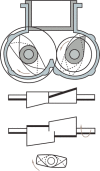
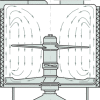




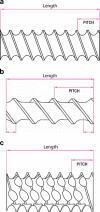

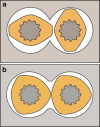




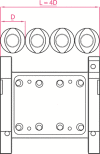



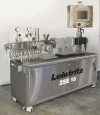


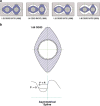


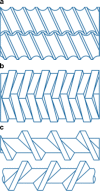

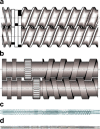
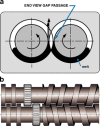
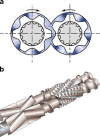
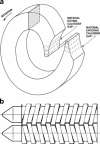


Similar articles
-
Hot-Melt Extrusion: from Theory to Application in Pharmaceutical Formulation-Where Are We Now?AAPS PharmSciTech. 2024 Feb 14;25(2):37. doi: 10.1208/s12249-024-02749-2. AAPS PharmSciTech. 2024. PMID: 38355916 Review.
-
Scale-Up of pharmaceutical Hot-Melt-Extrusion: Process optimization and transfer.Eur J Pharm Biopharm. 2019 Sep;142:396-404. doi: 10.1016/j.ejpb.2019.07.009. Epub 2019 Jul 8. Eur J Pharm Biopharm. 2019. PMID: 31295504
-
Continuous manufacture of hydroxychloroquine sulfate drug products via hot melt extrusion technology to meet increased demand during a global pandemic: From bench to pilot scale.Int J Pharm. 2021 Aug 10;605:120818. doi: 10.1016/j.ijpharm.2021.120818. Epub 2021 Jun 23. Int J Pharm. 2021. PMID: 34174359
-
Hot-melt extrusion technology and pharmaceutical application.Ther Deliv. 2012 Jun;3(6):787-97. doi: 10.4155/tde.12.26. Ther Deliv. 2012. PMID: 22838073 Review.
-
Hot-melt extrusion--basic principles and pharmaceutical applications.Drug Dev Ind Pharm. 2014 Sep;40(9):1133-55. doi: 10.3109/03639045.2013.838577. Epub 2014 Feb 13. Drug Dev Ind Pharm. 2014. PMID: 24520867 Review.
Cited by
-
Advances in Twin-Screw Granulation Processing.Pharmaceutics. 2021 Apr 27;13(5):624. doi: 10.3390/pharmaceutics13050624. Pharmaceutics. 2021. PMID: 33925577 Free PMC article. Review.
-
Impacts of Rotor Design, Screw Design, and Processing Parameters in a Farrel Continuous Mixer.Polymers (Basel). 2025 Feb 25;17(5):619. doi: 10.3390/polym17050619. Polymers (Basel). 2025. PMID: 40076112 Free PMC article.
-
Process Simulation of Twin-Screw Granulation: A Review.Pharmaceutics. 2024 May 24;16(6):706. doi: 10.3390/pharmaceutics16060706. Pharmaceutics. 2024. PMID: 38931829 Free PMC article. Review.
-
Reprocessing Postconsumer Polyurethane Foam Using Carbamate Exchange Catalysis and Twin-Screw Extrusion.ACS Cent Sci. 2020 Jun 24;6(6):921-927. doi: 10.1021/acscentsci.0c00083. Epub 2020 Apr 29. ACS Cent Sci. 2020. PMID: 32607439 Free PMC article.
-
Hot-Melt Extrusion: from Theory to Application in Pharmaceutical Formulation-Where Are We Now?AAPS PharmSciTech. 2024 Feb 14;25(2):37. doi: 10.1208/s12249-024-02749-2. AAPS PharmSciTech. 2024. PMID: 38355916 Review.
References
-
- Gray M. British Patent 5056; 1879.
-
- White JL, Bumm SH. Perspectives on the transition from batch to continuous mixing technologies in the compounding industry. Int Polym Process. 2010;25(5):5. doi: 10.3139/217.2293. - DOI
-
- Veris Consulting. Year-end machinery reports. Society of Plastics Industry, 2014.
-
- Thummert M, editor Dispersive mixing in co-rotating twin screw—principles and examples. Leistritz Twin Screw Extrusion Workshop; 2011; Clinton, NJ.
-
- Todd D. Reactive extrusion—thermo, theory, and reality. Leistritz Twin Screw Extrusion Workshop; 2010; Clinton, NJ.
Publication types
MeSH terms
Substances
LinkOut - more resources
Full Text Sources
Other Literature Sources
Medical

